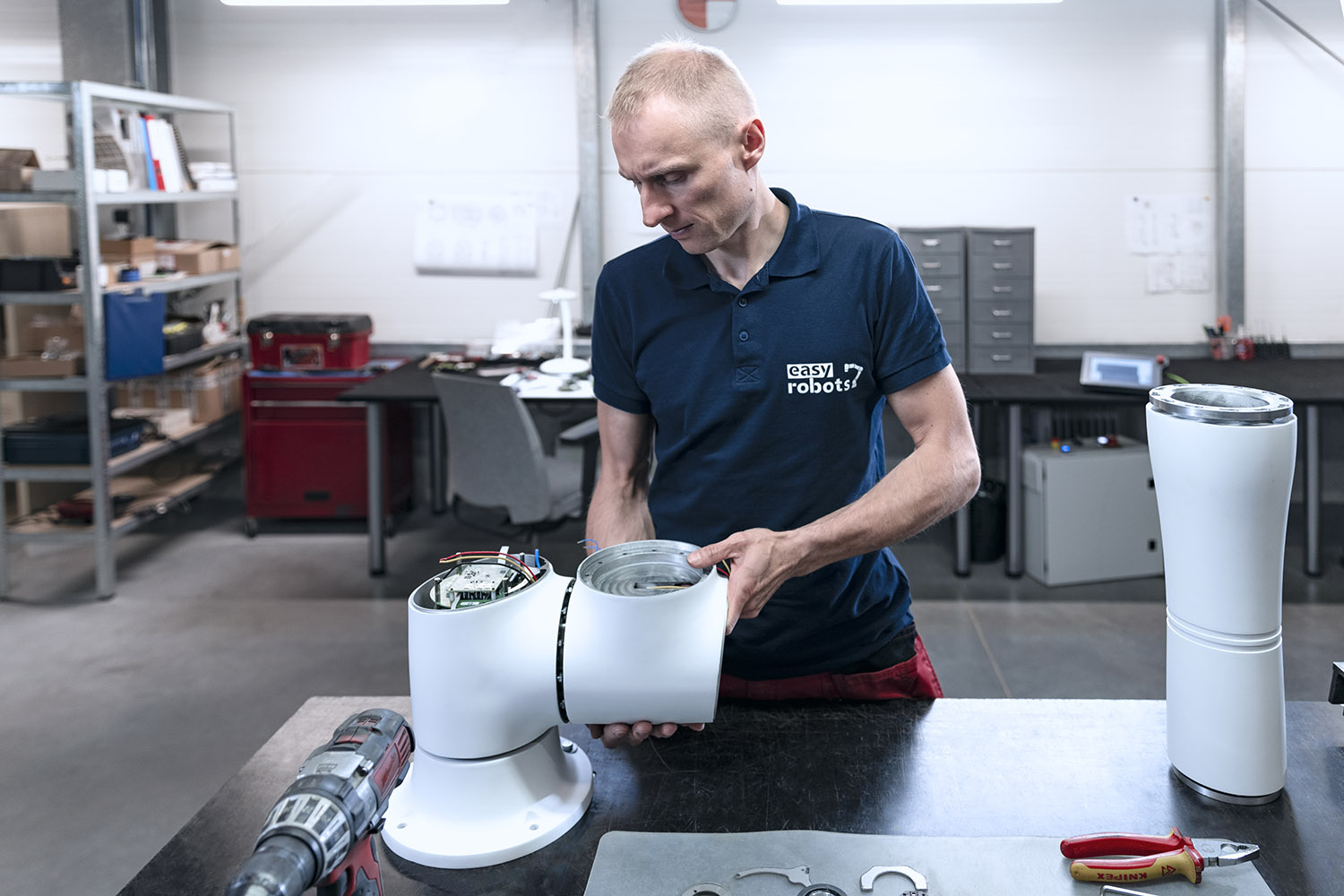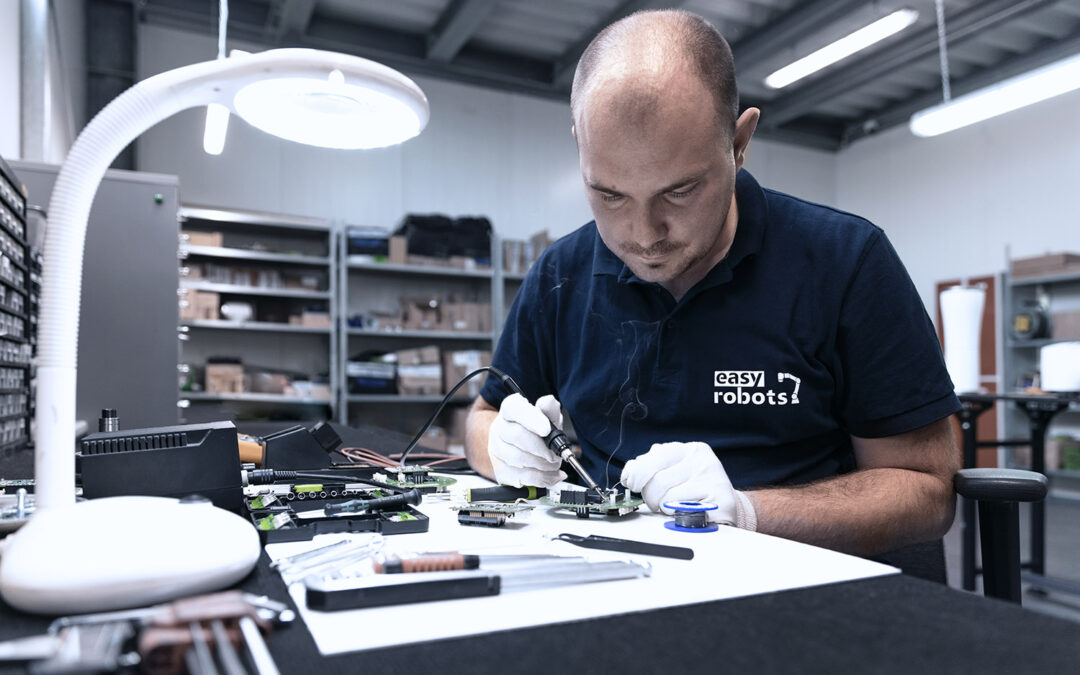Building an industrial robot
Many of us only know robots from science fiction movies or associate them with kitchen appliances. However, industrial robots are currently machines without which it is difficult to imagine a modern production plant. The development of technology has made it possible modern robots They are becoming more and more elegant and allow you to perform various types of tasks, especially very precise ones. Their functioning would not be possible if it were not for kinematics - a field of physics that allows the description of the mutual motion of bodies. In this article, we will introduce some of the most important concepts related to the kinematics of industrial robots.
Industrial robots and their applications
However, before we move on to the topic of kinematics, let's focus on industrial robots, and more specifically, what they really are and what applications they find in the modern world.
An industrial robot is a device used primarily in various types of production plants, where process automation is the key to improving operations. Thanks to properly programmed devices adapted to a specific production line, it is possible not only to accelerate production, but also to make it repeatable and extremely precise, which translates into the quality of products and greater efficiency of operations.
Industrial robots are used at various stages of production. Thanks to technological advancement, they can perform many tedious and repetitive activities for which until recently only humans were responsible. They enable, among others:
- storage and palletization;
- sorting and packing;
- welding and welding;
- painting;
- cutting;
- drilling;
- gluing;
- assembling systems;
- performing various types of inspections and measurements.
Many of these tasks require very high precision. Therefore, the construction of an industrial robot must be based on appropriate components and technologies.

What does an industrial robot consist of?
An industrial robot is a technical system consisting of a universal machine and a programmable control system. Most often, it takes the form of a mechanical arm that is able to precisely and quickly manipulate various objects - even very heavy ones.
Thanks to the combination of an appropriate arm design and proper control, the robot can reach various points of the working space. Moreover, the interface at the end of the arm allows the connection of various types of tools (grippers and other actuators). They can be used, for example, for painting, moving, cutting or performing other tasks. This, in turn, gives very wide possibilities in the use of such a device.
Thanks to modern technological solutions, it is possible to determine the directions of arm movement, the strength and precision of the manipulator, and even the number of operations performed by the robot. To make this possible, it is necessary to use the potential of kinematics for the proper operation of devices automating production processes. So what is kinematics and why is it so important?
Smooth and precise robot movements? Possible thanks to kinematics!
Kinematics is a branch of physics and a field that deals with the geometric aspect of the motion of bodies without taking into account their mass and the forces acting on them. To put it slightly more simply, it is a science that allows for the mathematical description of the movement of industrial robot components. Thanks to it, it is possible to answer the question: "in what positions should the individual robot drives be in order for the tool to be in a given position in space?"
Each industrial manipulator has its own structure, thanks to which it is possible to obtain appropriate mobility. Its most important part is the kinematic chain, i.e. a set of elements connected to form a coherent movement system. Movement is possible thanks to the fact that there are movable connections between the members, most often rotating ones.
Direct and inverse kinematics
Within kinematics, we can distinguish two typical tasks - the direct and the inverse task. A simple task asks where the end effector will be if the kinematic chain junctions are in a specific position. The solution to such a task is clear, which means that the gripper will always be in the same place.
The inverse kinematics task is to find such a system of positions of individual joints that will place the effector in a given position. In inverse kinematics, there is no simple relationship between the position of the gripper and the position of a specific joint. As a result - unlike the problem of simple kinematics - there may be many solutions to such a task, which translates into a higher degree of complexity of the calculations.
Fortunately, the problem of performing precise mathematical operations and driver software concerns only those people who build robots from scratch. Entrepreneurs who use purchased industrial robots in their processes do not have to worry much about the details of implementing robot control algorithms. However, such knowledge may be useful to industrial robot programmers. Thanks to it, they will be able to better cope with practical problems occurring when implementing robots to perform a specific task.
Advantages of using industrial robots
There are many benefits for entrepreneurs from using robots in the production process. Thanks to their structure and advanced control algorithms, they provide enormous opportunities for manufacturing companies, providing, among others:
- increasing the precision of activities performed and thus productivity;
- achieving repeatability of production, thanks to which each product has the same parameters and properties;
- acceleration of the production process at every stage - from storing materials, through cutting, painting or assembly, to product packaging;
- reduction of production costs;
- relieving employees of tedious and repetitive tasks, and even replacing people in many positions;
- increasing production safety by reducing or eliminating human work from potentially dangerous areas;
- freedom of programming and adapting activities to a specific production process.
All this makes industrial robots are becoming increasingly popular, and entrepreneurs are increasingly willing to use them to carry out the most complex work and achieve business goals.

